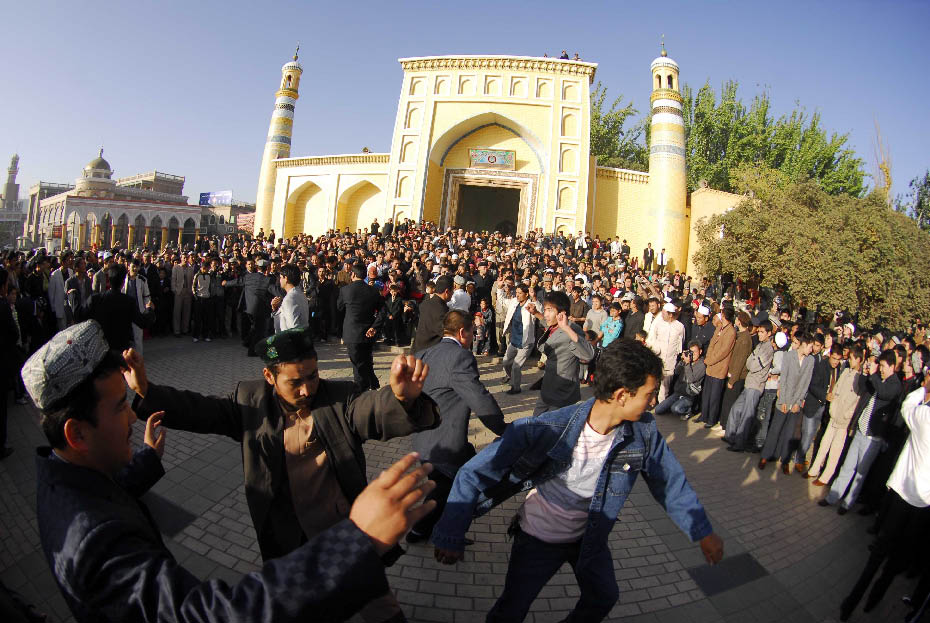Heart and Soul: Kashi
Heart and Soul
Kashi in Southern Xinjiang
By staff reporter LI GUOWEN

Moslems in Kashi celebrate the Fast-breaking Festival in front of the Eidkah Mosque. Cnsphoto
TRAVELING westward along the Old Silk Road, Kashi is the last big city before entering the Pamir Plateau. Kashi is a Uygur-inhabited settlement – people of the Muslim faith. On the streets tourists can see men wearing Uygur-style caps and women in their brightly colored ethnic clothing. Testimony to the city’s strong ethnic flavor it is said, “One cannot say he has been to Xinjiang without visiting Kashi.”
Kashi is short for “Kashgar,” meaning “jade-like place” in the Uygur language. The northern, middle and southern routes that made up the Old Silk Road of the second century B.C. all converged on this oasis. Centuries passed, but the old city of Kashi is well preserved, making up one-fifth of the total urban area and inhabited by 120,000 – a population density higher than Shanghai.
Although Kashi has kept many traditions and characteristics common to its heyday of trade, the modernization drive is changing its appearance, and this transformation is accelerating; especially after the 2008 Wenchuan Earthquake, large-scale housing renovation is being conducted to neutralize hidden dangers in the old districts. Even so, nearly one square kilometer of old houses have been kept intact to preserve the unique Uygur architectural culture.
Hathpace Residences
The old city of Kashi sprawls around the Eidkah Mosque. Koziqiyabixi Neighborhood in its northeastern part is a compact Uygur community built on a 40-meter-high and 800-meter-long loess mesa. Preserved for several centuries, it is a streetscape showcasing traditional Uygur residences and folklore.
Services
Economy
- Eco-agriculture and Eco-tourism Power Nanchang’s Green Development
- Balance Environmental Protection and Economic Prosperity – Nanchang Looks to European Technology for Green Development
- Sustainable Growth Requires Wiser Energy Use
- Chinese Economy: On the Path of Scientific Development
- China's Economy over the Last Ten Years

